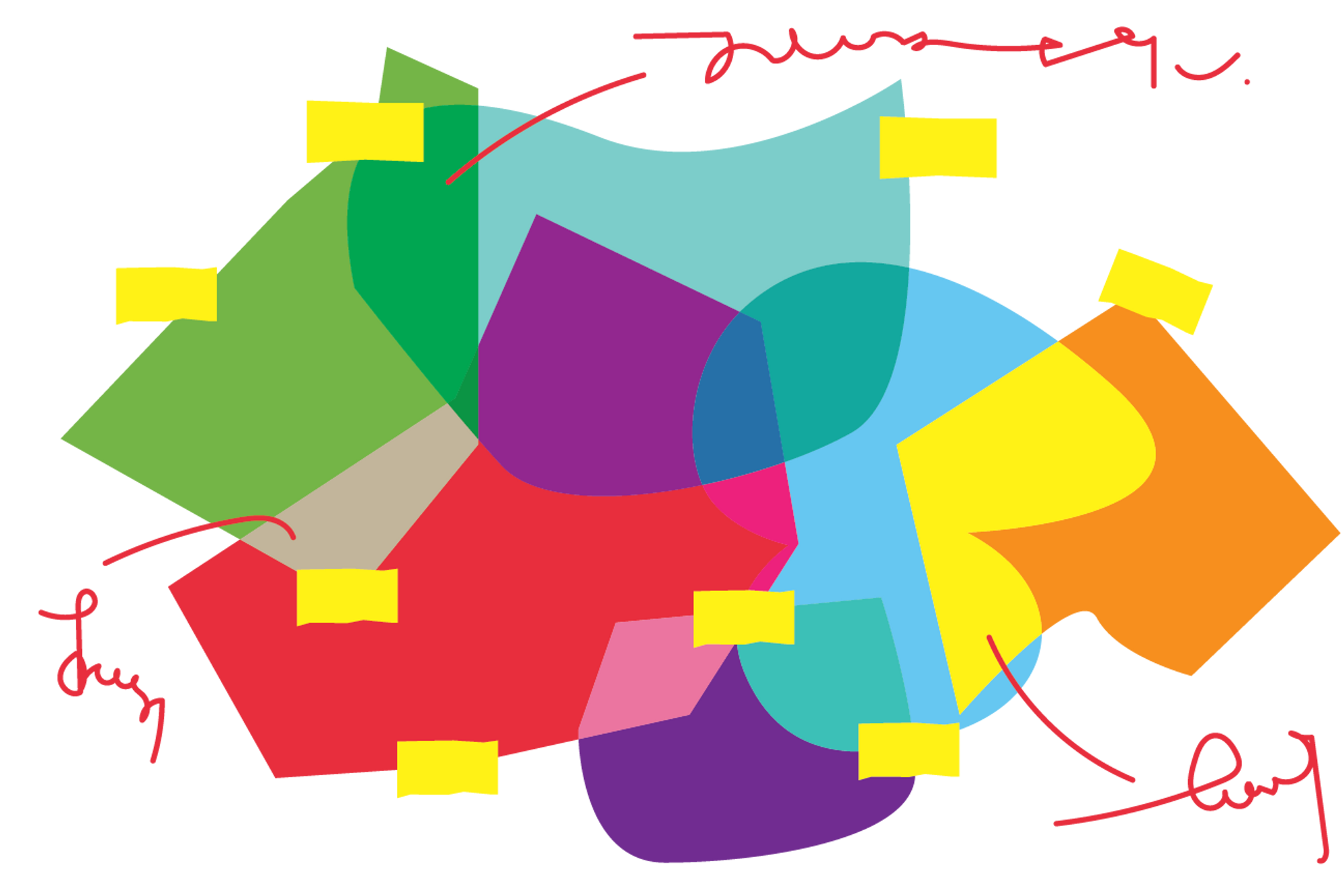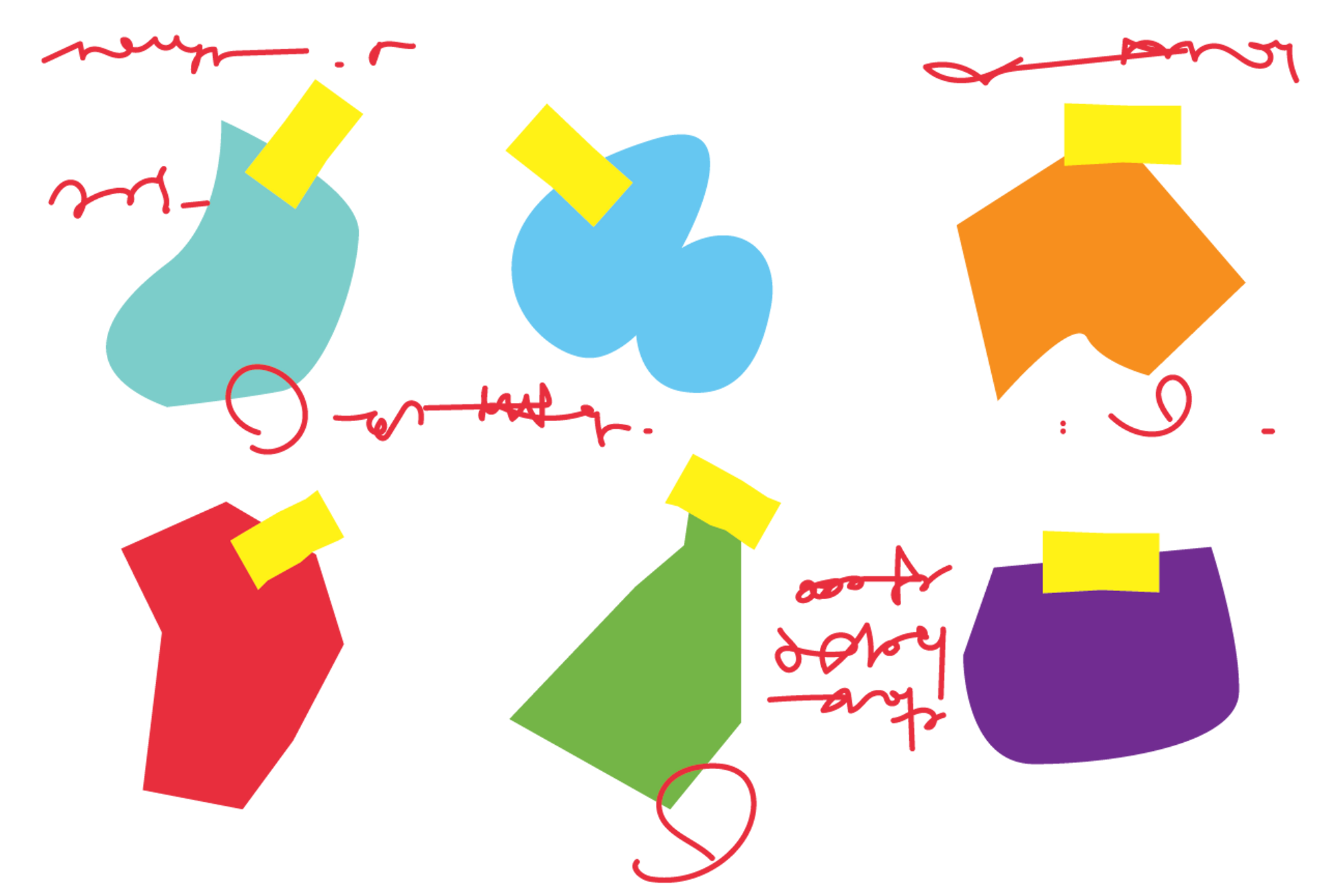An artist’s guide to the O-1 visa
Introduction
While finding a way to live and work in the US can prove challenging for artists from other countries, living in the states remains a common goal for those who want to take their career to the next level. New York City in particular has been a leading destination in the art world since at least the late 1950s, with world-class museums, galleries, and other art institutions. Important art auctions take place in New York, and fairs such as The Armory and Frieze bring international collectors to review, network, and socialize. New York also has a deep cultural brain trust of critics and curators looking for the next art stars, and being in New York is a great way to meet them.
Many experts in the art world estimate that to attain a true international standing, an artist needs to spend approximately five years living in New York. One reason for this is that everyone in the New York City art world goes out. They network with each other at openings and beyond, and that interpersonal connection goes much deeper than an email, text, or FaceTime meeting ever could.
In addition to New York City, Miami and Los Angeles have a gravitational pull for a global roster of artists. While there are certainly other art hubs in the US, the “big three” of New York, Miami, and LA have very large art economies that go beyond museum exhibitions, auctions, and gallery shows. In larger cities, emerging artists can find work collaborating with more senior artists, and can get involved in art-related fields such as design and fashion. This is another advantage for artists in America: they can find ways to support themselves while they chase their dream. This is not to say that an artist cannot do all of that in their own country, or in other art hubs such as Berlin. The point is that regardless of the challenges of coming here, many artists will continue to look to define their career in the arts by coming to the United States.
If you are an artist based outside of the US who is interested in spending time in the US to further define your career, this guide will help you learn the basics of the O-1 visa, and take steps towards submitting a promising application.
— Eric Shaub, Esq.

What’s the process of coming to the US as an artist?
Student visa options
To initially gain entry into the US, many artists enroll in a college program such as an MFA. To do this, they obtain either an F1 visa or a J1 visa.
One perk of both F1 and J1 visas is that they often allow the student to work in the US after graduation. The F1 offers Optional Practical Training for up to one year, and the J1 offers Academic Training for up to 18 months. Both allow graduates to be employed in jobs and earn a salary following graduation. However, in both circumstances, the employment authorization is limited to only allow for employment in the student’s field of study. For an artist, examples of employment would include working at an art gallery or museum, or assisting a senior artist. During this time, the artist is also allowed to show their art in exhibitions.
Trainee or intern visa options
Artists sometimes also get a J1 visa as either a trainee or an intern. Organizations such as International Arts and Artists can help an artist sort out a visa to participate in an internship or in an exchange program.
Visitor visas
Some artists will get a visitor visa to attend an artist residency or another type of artist-specific program in the US. It’s worth noting that the rules for visitor visas are complicated, and some artists do not understand the limitations. The Foreign Affairs Manual illustrates that artists can often do two things with a visitor visa, but not at the same time:
-
With a visitor visa, an artist can enter the US to make work that is not to be sold. For example, an artist can attend an artist residency where they will live on site for a period of time and where they make art.
-
An artist can enter the US to attend an art fair where their art will be sold. This art should be shipped from outside of the US for the purposes of the art fair only.
A simple rule of thumb for the visitor visa: an artist can come to make art they do not intend to sell, or they can come to promote a sale of art that was made outside of the US. They cannot, however, make artwork in the US and sell it here.
A note on visitor’s visa durations
Artists can be confused about the amount of time they are allowed to spend in the US on a visitor’s visa. This is because when a consulate issues a visitor’s visa, they often issue that visa for a five year period. For example, if the artist received the visa on January 1, 2020, it will often be valid until January 1, 2025. However, the five-year visitor’s visa does not actually allow the visitor to stay in the US for five years in a row. Instead, it allows for the artist to present that visa to a Customs and Border Enforcement Officer in the US any time during the five-year window, but then it is still up to that officer to determine how long the visitor can stay, based on their reason for being there.
Each time an artist attempts to enter the US they must meet with a Customs and Border Enforcement Officer. That officer will type in their name and date of birth. When they do so, the officer will have access to the information on the artist, regardless of whether they changed passports or even nationality. The officer will then know how much time the artist has spent in the US, and they will make a decision about whether the artist should be admitted or not. If the artist has a specific allowable reason to visit the US for a longer period of time, this will justify the officer admitting the visitor for that specific purpose. One example would be attending an artist residency. Performing research in the US is also an allowable reason to enter the US for a longer period of time. On the other hand, if the artist wants to visit the US to be “immersed in American culture,” then their explanation can sound too vague to the Customs and Border Enforcement Officer, and the artist can run into problems.
One additional note about visitor visas: there are a number of countries that are eligible for a program called ESTA, where the applicant can register to visit the US through a website instead of applying for a visa from a US consulate. ESTA stands for Electronic System for Travel Authorization. When a person registers for ESTA, they are allowed to apply for entry into the US as a visitor for a period of up to 90 days to participate in the same activities as they would be eligible for with a visitor’s visa.
Overview of the O-1 visa
What happens if an artist wants to stay longer than their original visa allows for, and if they want to be able to work in the US?
One option is to apply for a green card, called an Immigrant Visa, but that is a long process (and beyond the scope of this article). With current green card backlogs, artists may have to wait approximately three or more years to complete the Immigrant Visa process. If artists are interested in coming to the US on a faster timeline, the O-1 visa, often called the “artist’s visa,” can be a viable option.
There are three types of O-1 visas.
- O-1A is for academics, business executives, and sports players
- O-1B is known as the artist visa. Artists will apply for O-1B as an “alien in the arts.” If the visa applicant plans to work in the fields of Film or TV, they should apply for the visa for “Aliens of Extraordinary Achievement in Film and TV.” If they plan to apply for any other art-related position, they would apply for the visa called “Aliens of Extraordinary Ability in the Arts.”

How to qualify for the O-1 visa
For an artist to be eligible for the O-1B visa, the USCIS regulations require “distinction.”
This means a “high level of achievement in their field of arts, as evidenced by a degree of skill and recognition substantially above that ordinarily encountered to the extent that a person is described as prominent, leading, or well known in their field.”
So, how exactly can an artist qualify as having “distinction?”
The below regulations give USCIS the tools to identify prominent artists with a requirement that they have either received or been nominated for a national or international award equivalent to an Academy Award, Emmy or Grammy, or they satisfy three out of the six categories described below:
-
Performed and will perform services as a lead or starring participant in productions or events which have a distinguished reputation as evidenced by critical reviews, advertisements, publicity releases, publications, contracts, or endorsements.
-
Achieved national or international recognition for achievements, as shown by critical reviews or other published materials by or about the beneficiary in major newspapers, trade journals, magazines, or other publications.
-
Performed and will perform in a lead, starring, or critical role for organizations and establishments that have a distinguished reputation as evidenced by articles in newspapers, trade journals, publications, or testimonials.
-
A record of major commercial or critically acclaimed successes, as shown by such indicators as title, rating or standing in the field, box office receipts, motion picture or television ratings, and other occupational achievements reported in trade journals, major newspapers, or other publications.
-
Received significant recognition for achievements from organizations, critics, government agencies, or other recognized experts in the field in which the beneficiary is engaged, with the testimonials clearly indicating the author’s authority, expertise and knowledge of the beneficiary’s achievements.
-
A high salary or other substantial remuneration for services in relation to others in the field, as shown by contracts or other reliable evidence.
A detailed breakdown of the O-1 visa qualification categories
Awards equivalent to an Academy Award, Emmy, or Grammy
The current trend is that immigration rarely grants visas based on the award category, as to satisfy it, you must have either won or been nominated for a major national or international award. Immigration will most likely not consider grants, residencies, or fellowships as satisfying the awards category. On the other hand, evidence of grants, residencies, and other awards are still very important because they help to show the significance of the artist, which can help you qualify for three of the six categories listed below.
To qualify for the O-1 visa, you must satisfy three out of the six categories described below:
1. Leading role in events
For this category to be met, you must prove that you already have had a leading or starring role in events that are considered prestigious. You must also prove that you will be coming to the U.S. to have a lead or starring role in events that are also considered prestigious.
In this context, an “event” is something that occurs at a specific time—for example, a performance, an exhibition, a lecture, or a workshop. Events can be documented as “prestigious” with articles about the event that mention the artist’s name, including press releases, invitation cards, catalogs, advertisements, and (sometimes, but not always) online mentions. These materials are more likely to be considered evidence of prestige when they come from a prominent media outlet.
Most visual artists who are ready to apply for an O-1 have had multiple exhibitions, including solo and group shows. USCIS also looks for clear evidence that the artist had an important role in the past exhibition(s), and that the exhibition(s) were in some sense “prestigious.” To additionally prove that the artist will have a leading role once they are in the US, the artist should look for press about the venue where their confirmed future exhibition or event will take place. For example, an art gallery that has been mentioned in the New York Times would be considered prestigious.
The key to satisfying this category is to document that you are, 1) coming to the U.S. to do something specific, and 2) that you can document that there is evidence that what you will be doing is prestigious. This can be accomplished in three ways: by showing that the venue is prestigious, by showing that the event itself is prestigious, or by showing that the clients you will work with are prestigious.
2. Press: national or international recognition
Put simply, good evidence in this category will include articles about the artist in newspapers that have a national circulation, magazines that have a wide following, or trade journals. The regulations mention “articles” and not “article,” as a minimum of two articles would be required to satisfy this category (but having four articles would be better). Feature articles about the artist are most favored.
The artist should be prepared to show circulation information or other evidence that the publication is considered important. Online articles and articles in local newspapers and less well-known magazines may not satisfy the press category, but they can still add value to an application.
3. Critical or leading role for an organization
This category has two parts. Applicants must prove that they have already had a leading, starring, or critical role with organizations that have a distinguished reputation. They must also prove that they will have this relationship with organizations in the US once they obtain their visa.
This category often works well for designers and other applied artists, and less so for fine artists, since they often do not have a long-term relationship with an organization prior to arriving in the states. USCIS favors those who have had an employment relationship with the organization. If an artist has had multiple solo exhibitions with one gallery, there may be a way of satisfying this category.
4. Commercial success or critical acclaim
In general, this category would document commercial success verified by public information. This can include box office receipts, album or book chart success, or articles in trade publications demonstrating commercial or critical success. Examples of commercial success for artists would include evidence of record auction sales, a book on the New York Times best-seller list, and so forth.
5. Significance
The traditional way to demonstrate significance is to obtain strong recommendation letters from experts in the field to show that the artist is prominent. Additional evidence to demonstrate significance can include awards, residencies, or grants. Evidence that an artist’s work is included in an important collection can also be evidence of their significance.
6. High salary or other remuneration
Artists can show that they are prominent by demonstrating that they sell their work at a high price compared to other artists, that they are well compensated, or that their work is commercially successful. Letters from accountants or the artist’s gallery can confirm art sales to demonstrate that an artist has the equivalent of a high salary.

What types of artists actually end up qualifying for the O-1 visa?
Here is an example, based upon the expertise of the writer of this article, of an applicant who would have a strong chance of qualifying for the artist’s visa:
- The artist had four solo shows at either a museum or a prominent art gallery.
- Their shows were each reviewed in a major art magazine such as Artforum, Art in America, Frieze, or one of the largest newspapers in their country.
- If the artist has had six more general articles written about them in similarly high-profile magazines or newspapers. These six articles would not have to cover six separate events—they can overlap. They can also be profiles that do not focus on any event, or interviews that may or may not relate to an event.
The above artist would likely qualify for an O-1 visa as they would qualify for the “leading role” category, the “published material” category, and the “significance” category. While artists with lesser credentials have often received the O-1 visa, the recent trend is that USCIS has been very challenging and artists with lesser credentials may or may not qualify.
A note on using the same evidence for more than one category: When the USCIS officer reviews the evidence in an application, they look at each category separately. For this reason it is often acceptable to submit redundant evidence. Reviews of an exhibition can but submitted to demonstrate that the event was prestigious, and also be submitted a second time to show that the artist qualifies for the press category.
Before applying, it’s good to get an expert’s opinion on your application.
For any artist contemplating applying for an O-1 visa, I recommend seeking out a competent immigration attorney whose opinion you can get before applying. The attorney will review your CV and all your application materials, and make a judgment of “yes,” “no,” or “maybe” in regards to whether or not the application is likely to be approved.
If the lawyer doesn’t think the application is likely to be approved, the next question to ask is: “What do I need to achieve before I have a viable application?”
If the lawyer thinks that the application might be approved, it’s worth having a discussion to determine if applying is the right path forward. Some lawyers will suggest that the artist build out their credentials further before they apply. Others will suggest that the artist try for the visa and if it doesn’t work out, they can build their credentials and apply again later. In general, even if an artist is denied in their application, they will be eligible to re-apply, so long as they do not commit fraud or misrepresent their credentials.
It should be noted that artists are welcome to make their credentials look their best, but they must not do anything to misrepresent their career. If you photoshop your face on the cover of a magazine, for example, you will be prevented from ever coming to the US.

What else is involved in applying for the O-1 visa?
Having the credentials to qualify for the visa is not everything that is required. The artist must also present evidence to demonstrate what they will do in the US during the visa period. Additionally, artists cannot apply for an O-1 visa by themselves—they must have a petitioner who files the application on behalf of the artist.
Gallery as petitioner
While most artists do not have an employer lined up who will offer them a salary to work as an artist, some do have a gallery in the US that will be willing to represent them. In this instance, the gallery should be prepared to file the petition documents called I-129, G-28, a petitioner letter, and an agreement to confirm an exhibition schedule, called an “itinerary.” The itinerary should confirm events over the three-year period. The gallery-artist relationship is the most fundamental from the perspective of USCIS, and the type of application most likely to be approved without delays, so long as the gallery has some press of their own to help them qualify as “prestigious.”
US Agent as petitioner
If an artist does not have a gallery, then they can instead be petitioned by a “US Agent.” A US Agent is a company, based in the US, that will file the application for the artist so that the artist can work with other employers. Contracts are required to document what the artist will do in the US, and both the artist and the employer will be required to recognize the US Agent for the purpose of filing the application.
The contracts should be specific about who the artist will be working for, what the artist will do, how much they will earn, and where the work will be done. In some instances, the compensation can relate to art sales. For example, if an artist who has a US Agent will be showing with a US-based art gallery, then the gallery will explain all of the terms of that exhibition to the agent. They can specify that the artist will earn money if the work is sold, and give a range of compensation that the artist may receive. This is generally acceptable to USCIS, just note that the employers or galleries will need to have some press or other evidence to demonstrate to USCIS that the gallery or employer is “distinguished.”
An important note on freelancing
The USCIS has clarified that an artist is not allowed to apply for an O-1 visa if they want to freelance. What this means is that the artist should not be coming to the US to look for work. The “itinerary” is supposed to be for a specified set of events confirmed by contracts. The USCIS regulations do note, however, that once in the US, an artist can add events to their itinerary. What that means is that if an artist gets an O-1 visa and then they get invited to do another show, then they will be able to participate in that show.
USCIS clarifies as well that any material changes to employment will require approval in order for the visa to remain valid. An example of a situation requiring a new petition would be where an artist is going to add employment, such as being hired as a professor. If an artist has an O-1 visa with a gallery and is offered a position to teach art, then the chances are good that an amended petition is required to authorize that employment. However, if the artist is just going to give a one-time lecture, or if they will participate in an exhibition, then they would not have to notify immigration, as these would be examples of an artist adding an event to their itinerary.
Putting the O-1 visa application file together
The mechanics of putting an application together will require that the artist document their career, that they have a petitioner, and that the petitioner describes what the artist will do in the US.
Career documentation
To put together evidence of their career, artists will need to organize together PDFs for each qualification category. For this purpose, it’s worth saving PDF versions of press releases, promotional materials, reviews, and other documentation as it happens.
The artist should organize their materials with an emphasis on the most important or “prestigious” press, shows, or accolades they’ve received. As noted above, important art magazines and leading newspapers are considered the best press. There is no requirement to submit evidence in chronological order, and it’s usually best to submit the strongest materials first, even if they are not the most recent. The artist should be prepared to show a full and accurate English translation of any foreign materials, and to include circulation information (i.e. how many people the newspaper or magazine is distributed to) with any press.
Letters of recommendation
Letters of recommendation are often the best way to satisfy the “significance” category of an O-1 visa application. Letters should be from prominent art critics, curators, or academics, and should be very detailed about why the artist is important. Letters can also be obtained to confirm grants, residencies, prizes, and awards, as these can help satisfy the significance category. Evidence of being on a jury judging the work of other artists, letters from accountants, certain tax documentation (to confirm a high level of compensation), and letters from galleries representing the artist can also be added into the application. Letters should be on the letterhead of institutions if at all possible, with contact information included. This author’s strong advice is to work with an attorney who specializes in this area of the law so that they know how to go through the material and to organize it in the best possible way.

Submitting the O-1 visa application
Once all of the evidence is organized, a letter called the “petitioner letter” must be prepared. The petitioner letter summarizes for USCIS how all of the materials in the file are organized, and explains why the artist qualifies for the visa. There is also a form called I-129 that is prepared and signed by the petitioner. If the artist is represented by an attorney, there is a form called G-28 that also must be signed. Once everything is ready, the artist should make a copy of the application before mailing it to USCIS for their review.
There are two ways to file the application. One is called “regular processing” and the other is called “premium processing.” Both applications require the regular processing fee. The premium processing option requires an additional filing fee. With regular processing, the timing is open-ended and depends on a variety of factors including how busy USCIS is, and whether or not they have concerns about the application. Sometimes it takes a month to get an answer, and sometimes it takes four months. With premium processing, USCIS will review the file within 15 days.
When USCIS responds, they will either approve the application, send a denial letter, or ask for more evidence. In the event that they request further evidence, USCIS usually gives 12 weeks to reply. If you paid for premium processing, any response will be reviewed in 15 days. With regular processing, the timing again is open ended.
Overall, the timing of preparing a visa application and getting a response can range from two months to longer than a year. According to the most recent statistics available, approximately two thirds of applications for O-1 visas get approved in the initial submission. The other third either get denied or receive a request for evidence—if an artist gets asked for further evidence, once a response is submitted to USCIS, approximately two thirds of those applications end up getting approved. Overall, the trend is that every year the chances of getting approved diminish slightly, but in the grand scheme of visa applications, an artist’s chances of getting approved are not too bad.
I was approved for an O-1 visa. Now what?
After an artist submits an application, hopefully it will result in an approval. When this happens, the final step is to prepare a consular form called DS-160, and to schedule an interview at the US Consulate in the country of the applicant.
At the interview, the consular officer will often ask two questions: The first question is to ask about the artist’s career, and the second is what the artist will do in the US. The artist should be prepared to answer these questions in detail, and to discuss any of the evidence that was included in their application.
The consular officers are generally looking to make sure the applicant is indeed eligible for the visa. Before having this meeting, the artist should discuss any prior immigration problems or arrests with their attorney ahead of time. The consular officers have their own rules, which are codified in the Foreign Affairs Manual. In general, the consular officers are the gatekeepers to the United States, and while most of these interviews are a mere formality, they can get off track and if the consular officer is not convinced that the visa is warranted, they can delay or deny the visa. Because of this, it is important that the artist work with their attorney to prepare for the interview.
After the interview, the consulate will hold the passport and will return it in approximately one week with the visa. After that, the artist will be free to enter the US with their O-1 visa.
A final thought on applying for the O-1 visa
In the process of organizing their application, artists will often ask for help from a wide range of art professionals. Because the artist goes out and seeks contact with influential experts in the art world, these experts will often keep the artist in mind for upcoming exhibitions and projects. Networking is very important in the art world, and because the visa-application process is so collaborative, artists who network for the purpose of gaining a visa tend to end up improving their career regardless of the result of the application.

